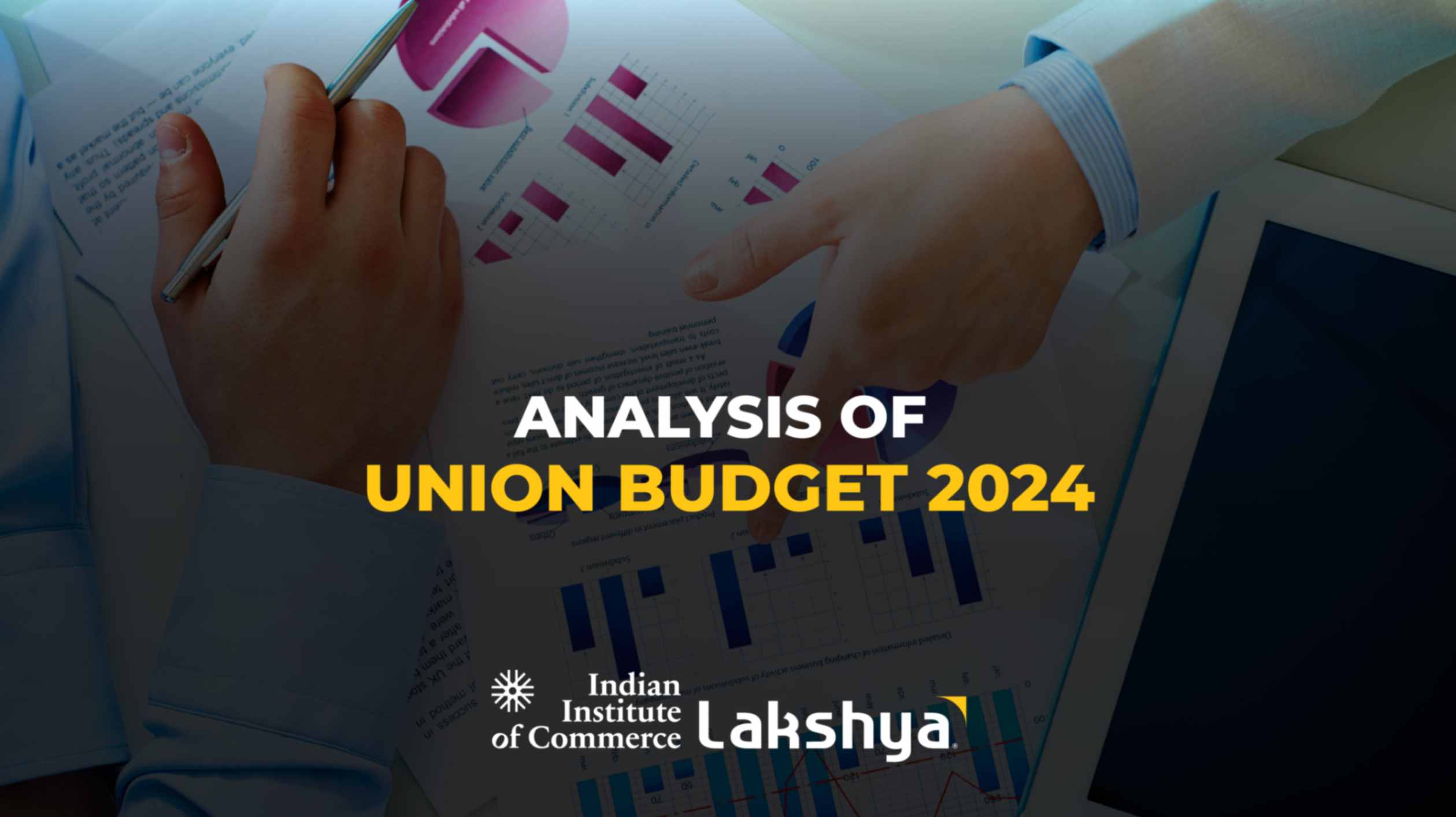The Union Budget of any country is like a financial roadmap, guiding how resources will be allocated and utilized to achieve national goals. In India, the Union Budget for the fiscal year 2024 has recently been announced, outlining the government's financial plans and priorities. Let's take a simplified look at what this budget means for the common citizen.
Key points about the Union Budget 2024:
- The Union Finance Minister, Smt. Nirmala Sitharaman presented the budget for the financial year 2024-25 on February 1, 2024.
- It's important to note that the Union Budget 2024 is classified as an Interim Budget rather than a Full Budget. This classification is due to the upcoming general elections in 2024.
- An Interim Budget, also known as a 'Vote-on-Account', is typically presented when circumstances prevent the presentation of a Full Budget. These circumstances may include election years or disruptions in the regular budget cycle.
- Unlike a Full Budget, which provides a detailed overview of the government's finances, including receipts, expenditures, economic policies, and priorities for the upcoming fiscal year, an Interim Budget serves as a provisional arrangement. It allows the government to meet its expenses for a portion of the year and typically does not include major policy announcements.
- It's anticipated that a Full Budget for the financial year 2024-25 will be presented in July after the formation of the newly elected government.
Overview of Revenue and Expenditure:
The Union Budget 2024 outlines the government's expected revenue and planned expenditure for the upcoming fiscal year. It's like planning a household budget, where you anticipate your income and decide how to spend it wisely. The government aims to balance its income and expenses to ensure sustainable economic growth.
Tax Proposals:
One crucial aspect of the budget is tax proposals. This includes any changes in tax rates or policies that may affect individuals or businesses. For example, changes in income tax slabs or corporate tax rates can directly impact people's wallets and business operations. It's essential to understand these changes to plan your finances effectively.
Allocation to Key Sectors:
The budget also allocates funds to various sectors such as healthcare, education, infrastructure, agriculture, and defense. These allocations reflect the government's priorities and its focus on promoting development and welfare. For instance, increased spending on healthcare can lead to better facilities and services for citizens, while investments in infrastructure can boost economic growth.
Impact on Economic Growth:
The budget's policies and allocations have a significant impact on the country's economic growth trajectory. By investing in key sectors, the government aims to stimulate economic activity, create employment opportunities, and enhance productivity. It's essential to analyze these measures to gauge their potential impact on the overall economy.
Strategic Initiatives of the Budget:
- AmritKaal as Karthavya Kaal: The government expressed its commitment to creating a high-growth economy, focusing on milestone-linked reforms by providing a 50-year interest-free loan of Rs.75,000 crore to states.
- FDI- First Develop India: Highlighting the success of FDI inflow from 2014-23, The Finance Minister emphasized negotiating bilateral treaties with a focus on 'First, Develop India.'
- Next-Generation Reforms: The Finance Minister announced the government's intent to undertake next-generation reforms, indicating a forward-looking approach to economic development.
Sectoral Initiatives:
- Railways: Three major railway corridor programs were introduced, aiming to enhance logistics efficiency and safety for passenger trains. Additionally, a significant conversion of rail bogeys to Vande Bharat standards was proposed.
- Green Energy:
Initiatives in green energy included viability gap funding for shore-wind energy, coal gasification and liquefaction capacity, and mandatory blending of compressed biogas in natural gas for transport and domestic use. - E-Vehicle Ecosystem and Bio-Manufacturing: The government pledged to expand and strengthen the e-vehicle sector and launch a scheme for bio-manufacturing to encourage biodegradable materials.
- Domestic Tourism: Acknowledging the success of G20 events, the government expressed support for developing tourism centers globally, offering long-term interest-free loans to states for this purpose.
Social Initiatives:
- Societal Changes: A high-powered committee was proposed to review challenges arising from population growth and demographic changes.
- Empowering Women: The government recognized the role of self-help groups (SHGs) in transforming the rural socio-economic landscape and aimed to honor and raise the target for such groups.
- Technological Changes: A corpus of Rs. 1 lakh crore was proposed for providing interest-free loans to encourage private sector research and innovation in sunrise domains.
Vision for Viksit Bharat:
The Finance Minister presented a vision for "Viksit Bharat," envisioning a prosperous India in harmony with nature. The Finance Minister emphasized the potential of India to lead global growth, leveraging the demographic dividend, technology, and sustainable practices.
Conclusion:
The Union Budget 2024-25 outlined a holistic vision for India's development, addressing challenges and embracing growth through strategic initiatives, economic reforms, and sectoral allocations. With a focus on fiscal prudence, the budget aims to propel the country towards a sustainable and inclusive future, fostering innovation, and leveraging India's inherent strengths. As the government continues to navigate global complexities, the budget reflects a commitment to building a resilient and vibrant economy, paving the way for a Viksit Bharat.

 ABOUT LAKSHYA
ABOUT LAKSHYA  WHY CHOOSE LAKSHYA
WHY CHOOSE LAKSHYA  MISSION AND VISION
MISSION AND VISION  CHARTERED ACCOUNTANCY (CA)
CHARTERED ACCOUNTANCY (CA)  ACCA
ACCA  CMA-USA
CMA-USA  RESULTS
RESULTS 


